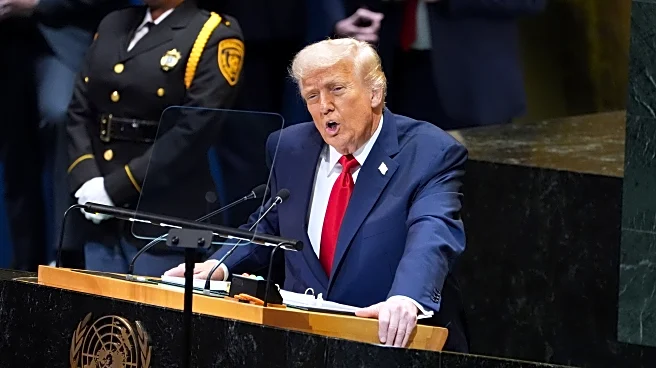What is the story about?
What's Happening?
A new index launched by Orbital, in collaboration with Artemis.xyz and Sensor Tower, highlights the growing role of stablecoins in retail payments. The 'Stablecoins Retail Payments Index' provides insights into consumer payment behaviors, focusing on transactions valued up to $10,000. The findings reveal that Binance Smart Chain (BSC) has emerged as the leading blockchain for retail-sized transaction volumes, accounting for 45% of such payments. This shift is driven by lower-cost networks like BSC and TRON, which are facilitating significant stablecoin adoption. The index also notes the dominance of USDT in retail payments, with transaction volumes significantly higher than USDC, although USDC is experiencing faster growth. Additionally, the index identifies USD1 as a potential challenger, with a 757% increase in retail transaction volume between May and June.
Why It's Important?
The emergence of Binance Smart Chain as a leader in retail stablecoin payments underscores the increasing importance of blockchain technology in everyday financial transactions. Stablecoins, with over $250 billion in circulation, are becoming integral to the economy, offering a fast and convenient way to move money. This trend is particularly significant for cross-border transactions where speed and cost are critical. The dominance of USDT in retail payments highlights its widespread acceptance, while the growth of USDC suggests shifting user preferences. The index also reveals 'shadow FX' rates, indicating the role of stablecoins in markets with currency controls or high inflation, such as Venezuela, Turkey, South Africa, and Saudi Arabia.
What's Next?
The insights from Orbital's index suggest potential shifts in the stablecoin market, with USDC's faster growth indicating a possible change in user preference. The identification of USD1 as a challenger could lead to increased competition among stablecoins. As stablecoins continue to carve out a distinct role in retail payments, their integration into everyday financial transactions may expand, potentially replacing or complementing traditional payment methods. The index provides a snapshot of current trends, offering a glimpse into the future direction of the stablecoin market.
Beyond the Headlines
The index's findings on 'shadow FX' rates highlight the complex dynamics of stablecoin usage in countries with economic instability. The premium paid by retail users in Venezuela and other nations reflects the demand for stablecoins as a hedge against inflation and currency devaluation. This aspect of stablecoin usage raises questions about the broader implications for global financial systems and the potential for stablecoins to influence monetary policy in countries with restrictive currency controls.
AI Generated Content
Do you find this article useful?















